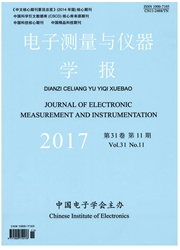

 中文摘要:
中文摘要:
研究无线充电设备(wireless charging equipment,WCE)的充电能量和行驶能量均有限的情况下使用WCE为传感器节点周期性充电问题。对于每一个充电周期,旨在最大化充电周期时间的同时最小化WCE充电和行驶能量的总消耗值,以最小的WCE能量消耗功率保证无线可充电传感器网络(wireless recharging sensors networks,WRSNs)永久性工作下去。通过分析传感器节点能量约束和WCE行驶及充电约束,建立以最小化WCE能量消耗功率为优化目标的优化模型。充电问题为NP-Complete问题,使用混沌粒子群算法(chaos particle swarm optimization,CPSO)求解优化问题得到WCE充电路径和节点充电时间,并设计了由2种数据路由和3种节点分布类型组合成的6种WRSNs仿真场景,与基本遗传算法(genetic algorithm,GA)对比,其收敛速度至少提升了1倍。
 英文摘要:
英文摘要:
The problem of applying the wireless charging equipment (WCE) for charging the sensor periodically is investigated in this paper, in which the charging energy and the traveling energy of the WCE are assumed limited.For each charging period, the total consumed energy of the WCE for charging and travelling is minimized when maximizing the charging period.In this way, the wireless recharging sensors network (WRSNs) can work permanently by using the minimum energy of the WCE.The optimization model of minimizing the energy of WCE is built based on analyzing the energy constraint of sensor nodes and the charging and travelling constraints of WCE.The charging problem is a NP-Complete problem in this paper.Combining with the optimization model, the chaotic particle swarm optimization algorithm (CPSO) is applied to solving this optimization problem for getting the charging route of WCE and charging time of sensor node.Furthermore, six simulation scenes of WRSNs which are consisted of two kinds of data routing and three kinds of nodes distribution are designed.The convergence rates of CPSO is double the convergence rates of genetic algorithm (GA) at least.
 同期刊论文项目
同期刊论文项目
 同项目期刊论文
同项目期刊论文
 期刊信息
期刊信息
